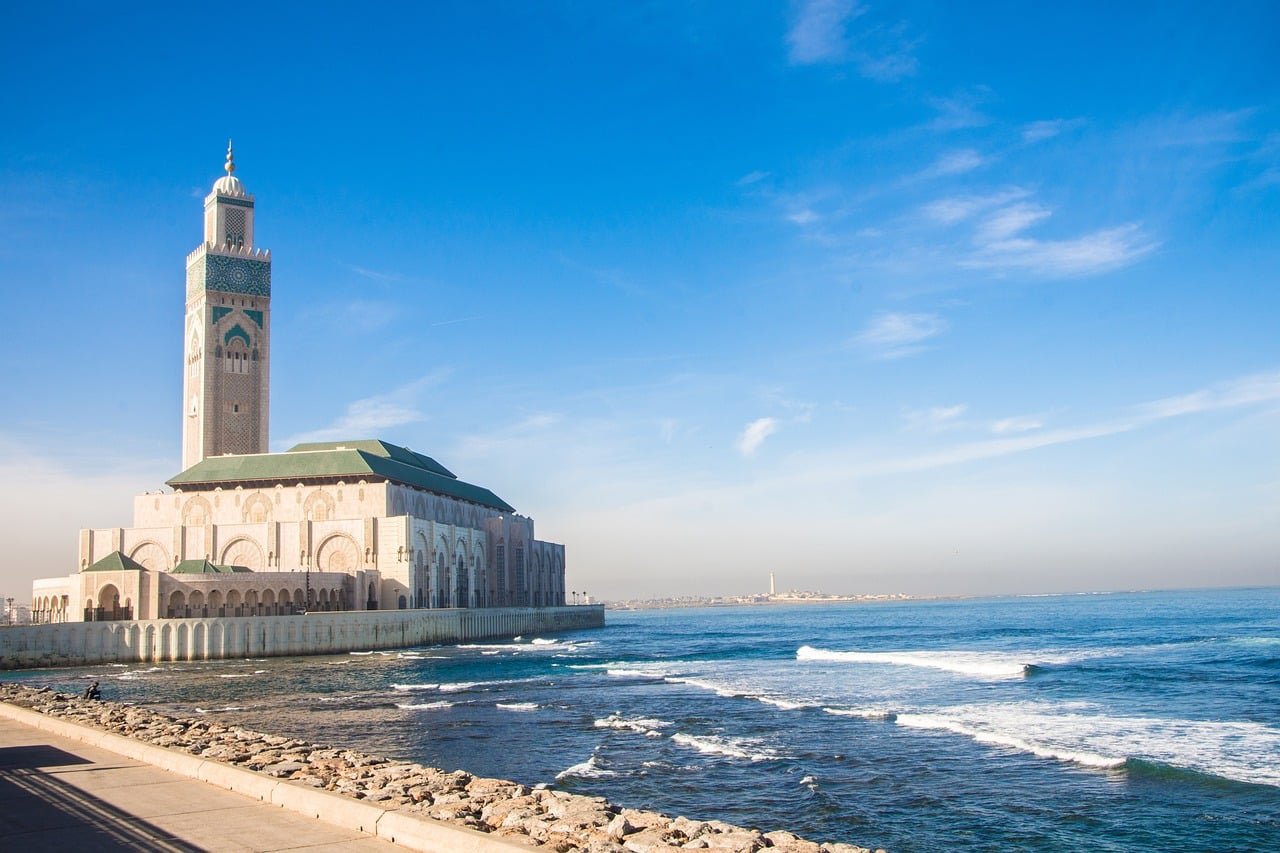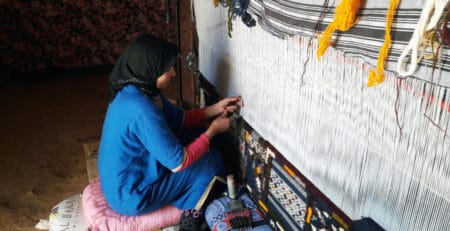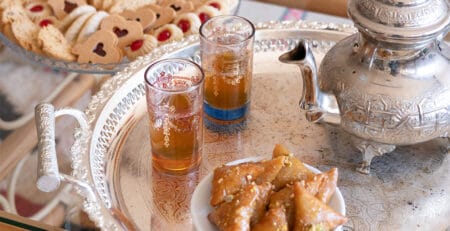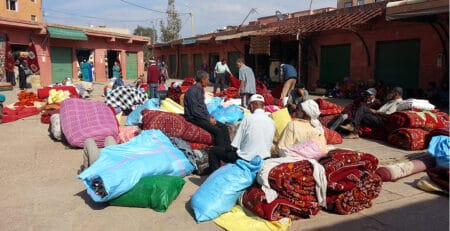Discovering Casablanca: The Unexpected Beauty of Morocco’s Economic Capital

Casablanca, or “Casa” as locals affectionately call it, often overshadowed by more touristic cities of Morocco, this economic powerhouse offers a different kind of charm—raw, layered, and undeniably real. It’s where tradition meets bold modernity, where call to prayer echoes between Art Deco facades, and where business suits mingle with kaftans in the bustling city center. To understand Morocco’s present and future, there’s no better place to start than here.
Table of Contents
Dar el Baida: Tracing the History of Casablanca
The name “Casablanca,” meaning "white house" in Spanish, is more than just a colonial legacy—it encapsulates the city’s complex and layered history. Long before European powers arrived, this coastal city was known as Anfa by the indigenous Berber (Amazigh) people. Anfa was an important trading hub, strategically positioned for maritime commerce along the Atlantic coast. Its Berber origins root Casablanca firmly within the rich cultural tapestry of North Africa, reflecting the deep presence and influence of Amazigh civilization.
In the 15th century, the Portuguese, seeking to expand their influence along the African coast, destroyed Anfa. However, the city was resilient: it was rebuilt by the Moroccans who named it Dar el Baida, which also translates to "the white house" in Arabic. This name highlighted both the city's architectural character and its symbolic renewal.
Later, during the era of European colonialism, Spanish and then French forces left their marks. The Spanish adapted the name to Casa Blanca, the Spanish translation of "white house," which stuck as the city’s modern name. Under French colonial rule, Casablanca grew rapidly into a cosmopolitan port city, blending European urban planning and architecture with Moroccan and Amazigh traditions.
This evolution—from Anfa to Dar el Baida to Casablanca—reflects the city’s dynamic identity shaped by Arab, Amazigh, European, and African influences. Each wave of culture contributed to its rich architectural landscape, linguistic diversity, and vibrant social fabric. Today, Casablanca stands as a living mosaic of these intersecting histories, where ancient Berber roots meet the cosmopolitan energy of a modern metropolis.
Morocco Architectural Marvels: Casablanca as a Living Experiment from the 1920s to Today
Casablanca’s urban landscape is a century-long architectural experiment that continues to evolve. Since the 1920s, during the French Protectorate, the city became a testing ground where European modernist ideas met Moroccan aesthetics. Visionaries like Henri Prost laid out ambitious urban plans that merged functionality with local identity, shaping a city defined by Art Deco, Neo-Moorish, and International Style architecture.
Iconic landmarks include the Cinema Rialto, the Liberté Building, and the Mahkama du Pacha, a Moorish-style civic palace known for its intricate zellige and arches. The Villa des Arts, a preserved Art Deco residence turned contemporary art center, and the unique Villa Camembert—a round, Modernist home built in the 1960s—add to the city’s architectural diversity.
Towering above the Atlantic, the Hassan II Mosque is Casablanca’s most famous monument and one of the largest mosques in the world. Completed in 1993, it combines traditional craftsmanship with cutting-edge engineering: its soaring minaret (210 meters) is the tallest in the world, and parts of its marble prayer hall extend over the sea. It stands as both a spiritual and architectural symbol of modern Morocco.
Another recent highlight is the restoration of Villa Carl Ficke, built between 1911 and 1913 by German merchant Carl Ficke. Located on Boulevard de la Résistance, the villa has been reborn as the Musée de la Mémoire de Casablanca, under the guidance of architect Salima Naji. The museum blends historical memory, urban storytelling, and contemporary art to reflect the city’s evolving identity.
Post-independence, Casablanca expanded rapidly, integrating new neighborhoods and high-rises. Yet its architectural DNA remains unique: colonial facades, Islamic motifs, and glass towers coexist in a city where buildings are not just structures—they’re milestones in a living, breathing urban narrative.
Exploring the Local Markets: Souks and Shopping Experiences
Casablanca offers visitors an authentic experience through its traditional markets, which reflect the daily life and culture of Morocco.
One of the most famous and bustling markets is the Marché Central (Central Market), located in the heart of the city. Here you’ll find fresh produce, freshly caught fish, fruits, vegetables, and spices. It’s the perfect place to witness local life and enjoy typical dishes like grilled fish served directly by street vendors.
In the historic Habous Quarter, also known as the “New Medina,” there is the distinctive Olive Market. This specialized market offers a wide selection of high-quality Moroccan olives, often accompanied by preserves and other local culinary products. The Habous Quarter is renowned for its traditional architecture and artisan shops where you can purchase ceramics, textiles, and leather goods.
Both markets provide a wonderful opportunity to immerse yourself in the scents, colors, and sounds of Casablanca while discovering typical and handcrafted products to take home as souvenirs.
The Culinary Scene: From Street Food to Royal Mansour Refinement
Casablanca ’s culinary landscape is a rich tapestry of flavors of Morocco—rooted in tradition, shaped by coastal bounty, and elevated by modern creativity.
For a taste of everyday Casablanca, start at Marché Central, a lively market where fresh seafood is grilled right before your eyes. Oysters, calamari, and fish come straight from the Atlantic, served with simple yet bold flavors that reflect the city’s maritime soul.
If you’re craving something heartier, make your way toward the Ancien Abattoir district, known for its mechoui—slow-roasted lamb cooked over open flames until perfectly tender. Served with crusty bread and a pinch of cumin salt, mechoui offers a deep, traditional flavor that speaks to Morocco’s rustic culinary roots.
From smoky market stalls to contemporary bistros, Casablanca’s food scene is as varied and vibrant as the city itself—an experience shaped by history, diversity, and a strong sense of place.
Cultural Festivals and Events in Casablanca
Casablanca is not just Morocco ’s economic powerhouse—it’s a cultural heartbeat. The city pulses with creativity year-round, drawing artists, musicians, and storytellers into its dynamic urban rhythm. Each spring, the Jazzablanca Festival transforms the city into a hub of international sounds, with open-air concerts and intimate venues hosting jazz, soul, and world music acts from across the globe.
Just as vital is Le Boulevard, Casablanca’s boldest and most electric cultural experience. Born from the underground in 1999, this grassroots festival has become a landmark for alternative music and youth expression. Its Tremplin competition has launched some of Morocco’s most iconic artists—from Hoba Hoba Spirit to Don Bigg—offering a vital platform for rap, metal, electro, and fusion genres that challenge the mainstream. Beyond music, Le Boulevard champions urban culture through street art initiatives like Sbagha Bagha, skateboarding events, and DIY fashion. It’s free, independent, and unapologetically raw—an annual reminder that Casablanca’s creative scene doesn’t follow trends, it sets them.
Casablanca: City of Movies
While the 1942 classic Casablanca was filmed entirely outside Morocco, in Hollywood, the film immortalized the city as a symbol of romance and intrigue. Today, Casablanca continues to inspire filmmakers—not as myth, but as a dynamic, real-world set.
Moroccan directors like Nabil Ayouch have used the city to explore complex urban stories, from Ali Zaoua and Casanegra to the recent Everybody Loves Touda (2024). International productions have also turned to Casablanca for its architectural diversity and atmosphere. Films like Body of Lies, Mission: Impossible – Rogue Nation, and War Dogs were partially shot here, taking advantage of the city’s adaptable character.
One standout local production is Hounds (2023), a Moroccan crime drama filmed entirely in Casablanca and selected for the Cannes Film Festival. The city’s streets brought the story to life with raw energy.
For visitors, Casablanca offers subtle nods to its cinematic legacy—from real-life filming locations to the recreated Rick’s Café, where fans can step into the world of the film that gave the city its global fame.
Day Trips from Casablanca: Nearby Attractions
Casablanca coastal location and strong transport links make it an ideal base for exploring Morocco ’s diverse surroundings.
Northward, just an hour by train, Rabat offers a blend of historic landmarks and calm elegance—visit the Hassan Tower, the Kasbah of the Udayas, or stroll along the Bouregreg.
Southward, El Jadida charms with its relaxed seaside vibe and Portuguese heritage, including the UNESCO-listed Portuguese Cistern and fortified walls.
Inland, explore Meknès, a quieter imperial city with massive gates, medersas, and royal granaries. From there, reach Fès, Morocco’s spiritual and cultural heart, perfect for a day or overnight trip with its maze-like medina and artisan culture.
Nature lovers can head to the Benslimane forest, ideal for walks and picnics, or venture further into the Middle Atlas, where cedar forests, cool air, and mountain towns like Azrou and Ifrane offer a refreshing change of pace.
From city escapes to nature retreats, Casablanca connects you to Morocco’s many faces—all within a short journey.
Conclusion: Why Casablanca Should Be on Your Travel List
Casablanca isn’t always postcard-perfect—and that’s precisely what makes it unforgettable. It’s a city of contrasts and momentum, where tradition and innovation collide in the hum of everyday life. While other Moroccan cities may seem frozen in time, Casablanca is resolutely present and future-facing. Its charm doesn’t lie in curated alleys or preserved souks, but in the layered, lived-in texture of a metropolis constantly reinventing itself.
Here, Art Deco facades stand beside glass towers, and street art blooms on crumbling walls. The call to prayer mingles with the buzz of traffic, rooftop cafés serve espresso and mint tea, and every neighborhood tells a different story. Casablanca isn’t trying to be beautiful in a conventional sense—it’s raw, real, and unapologetically itself.
For travelers who want more than surface beauty—who want to understand how Morocco is changing, growing, and dreaming—Casablanca offers a deeper, more complex experience. It challenges expectations, rewards curiosity, and reveals its soul slowly. You don’t just visit Casablanca—you grow into it.





Leave a Reply
You must be logged in to post a comment.